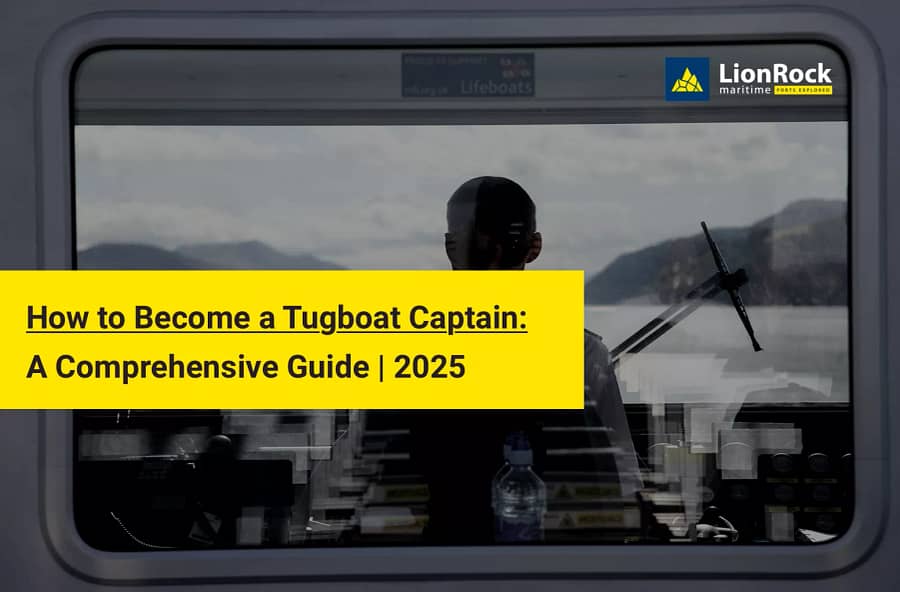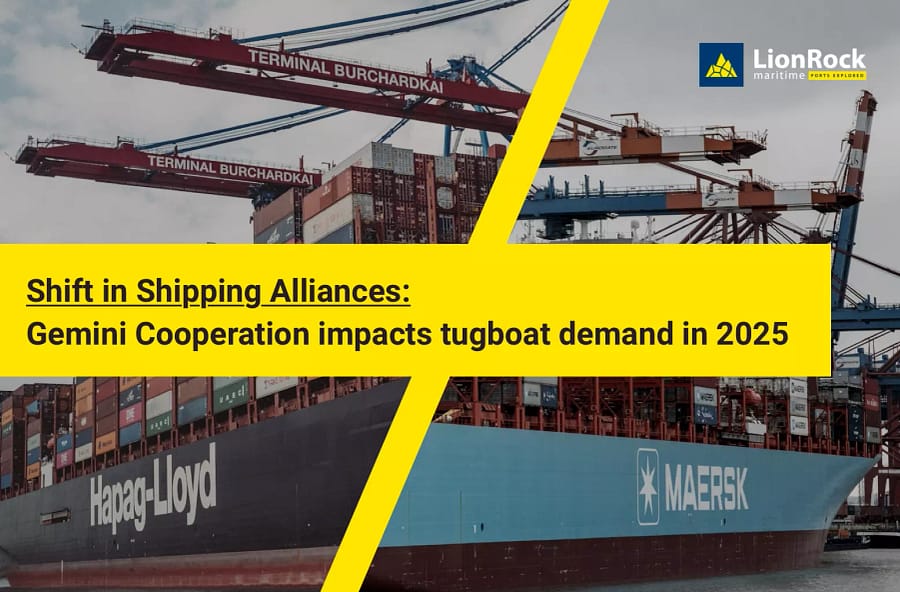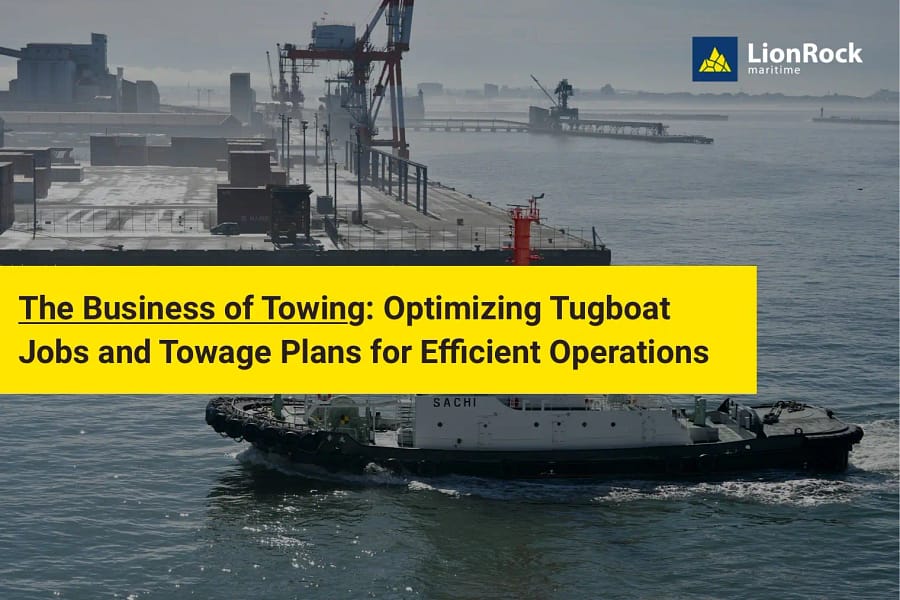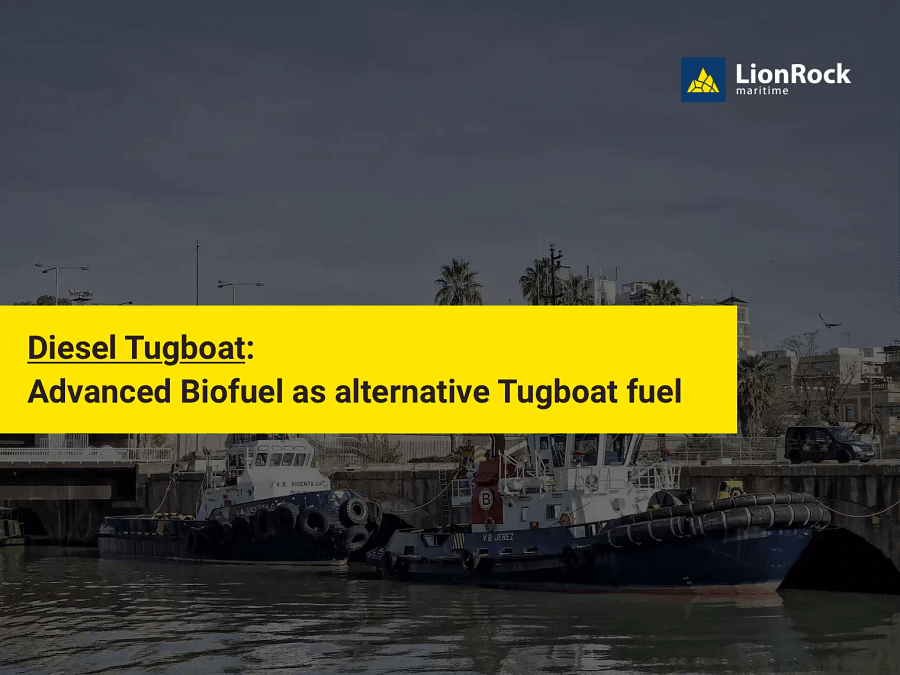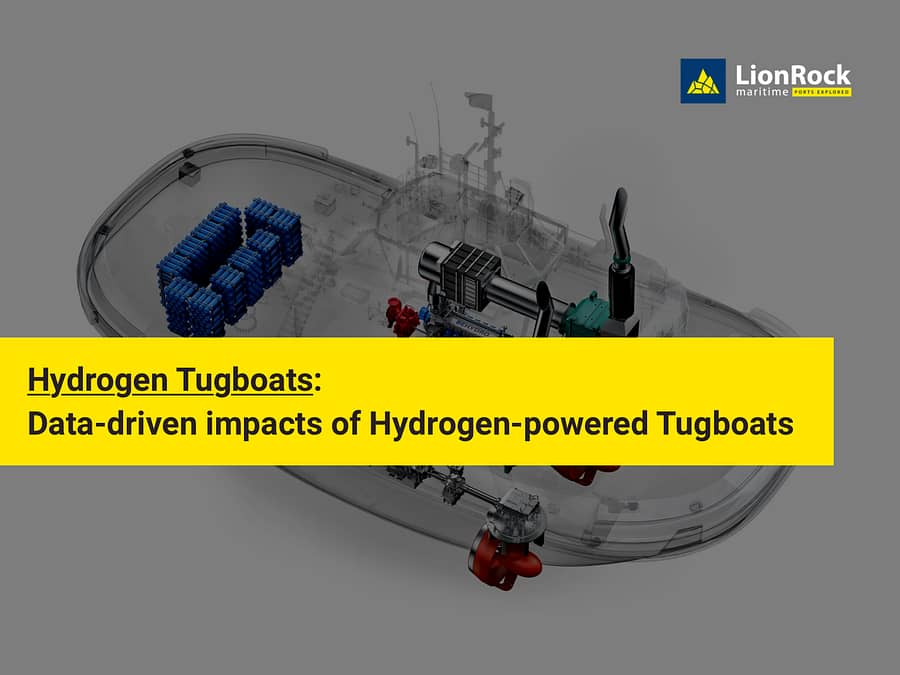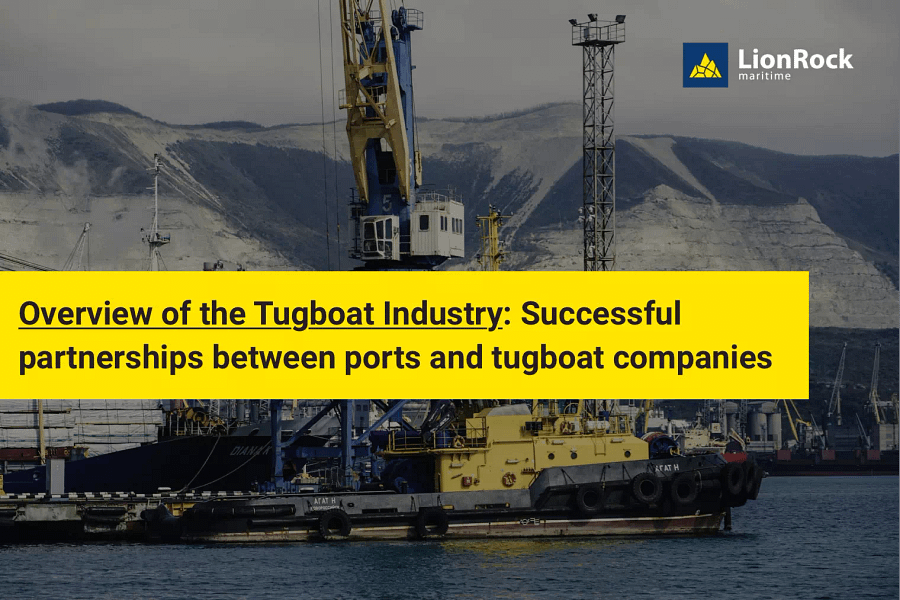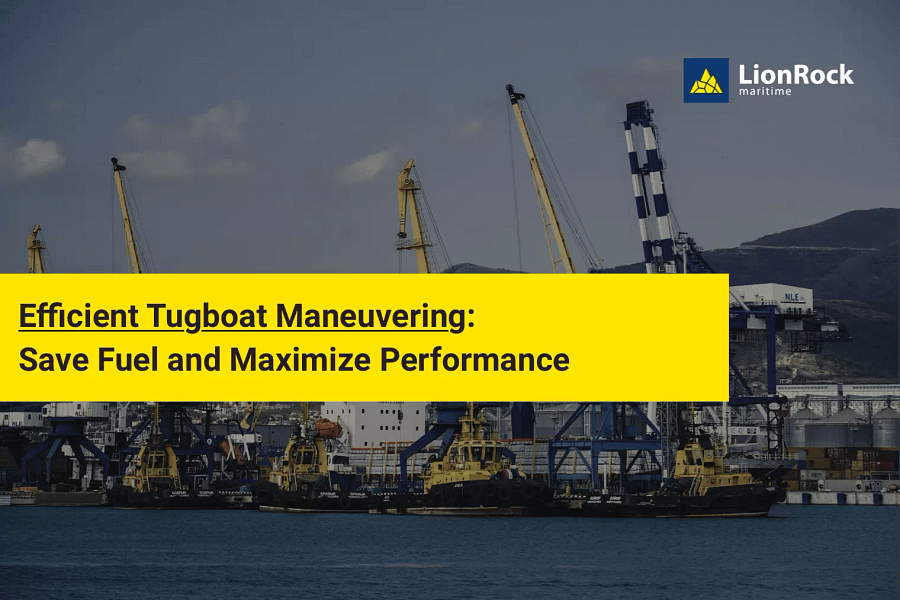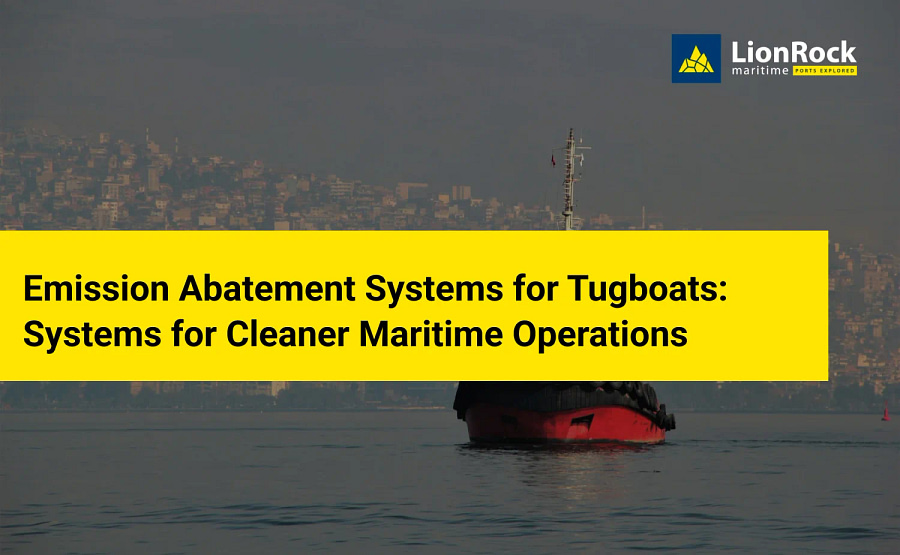Revolutionizing Tugboat Fuel Consumption with LionRock

- Decoding Tugboat Fuel Consumption: How LionRock Maritime's Data-Driven Model is Revolutionizing the Maritime Industry
- Explaining the Variables Affecting Ship Fuel Consumption
- Discussing Traditional Tug Boat Fuel Consumption Calculation Methods
- The Shortcomings of Current Techniques and the Need for Innovation
- LionRock Maritime's Predictive Model: Operational Data for Fuel Efficiency
- The Benefits of LionRock's Approach to Fuel Consumption and Decarbonization
- Conclusion: Embracing Data-Driven Solutions in Maritime Operations
- Optimize Your Operations with LionRock
- What factors influence tugboat fuel consumption?
- What are the limitations of traditional ship fuel consumption calculation methods?
- How does LionRock Maritime's predictive model improve upon these traditional methods?
- What benefits does LionRock's approach provide data to the maritime industry?
Decoding Tugboat Fuel Consumption: How LionRock Maritime's Data-Driven Model is Revolutionizing the Maritime Industry
Understanding and managing fuel consumption is a critical aspect of tugboat operations. Efficient fuel usage not only helps to reduce costs but also contributes to the wider goal of environmental sustainability. However, accurately quantifying this variable cost remains a significant challenge in the industry. Fuel efficiency impacts both the financial bottom line and the environmental footprint of tugboat operations, thus making it a key factor in the industry’s drive towards more sustainable practices. Furthermore, as reported by Professional Mariner, fuel costs can represent up to 30% of a tugboat’s operating cost, making it a prime area for potential cost savings and efficiency improvements. (1)
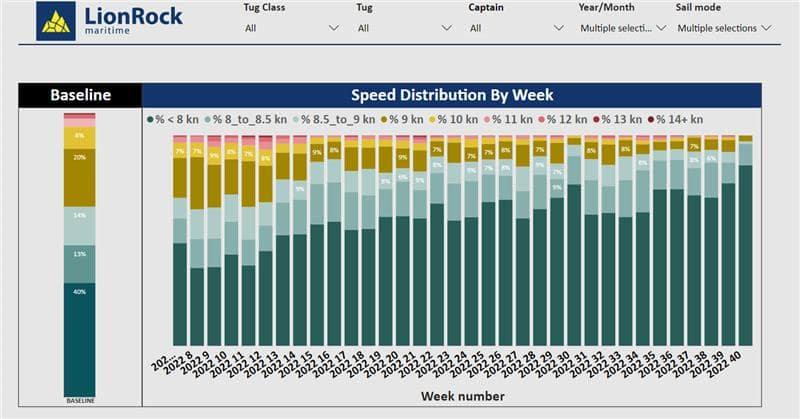
Explaining the Variables Affecting Ship Fuel Consumption
Fuel consumption in tugboats is influenced by a myriad of factors, including environmental conditions, tugboat specifications, job execution methods, and characteristics of the assisted ship. Environmental conditions such as wind speed, direction, currents, and wave height can significantly alter fuel consumption. According to an IOP Conference Series study, environmental factors could increase fuel consumption by up to 20% (2). The tugboat’s specifications, such as engine type and efficiency, hull design, and displacement, are also crucial considerations.
Discussing Traditional Tug Boat Fuel Consumption Calculation Methods
Traditionally, operators attempt to quantify fuel costs by dividing total fuel expense by the tugboat’s running hours, yielding a rough average. Sophisticated monitoring systems installed on vessels are also used, but these bring high costs and the complexity of their implementation and maintenance. While these systems provide real-time fuel consumption data, their high upfront costs and the need for continuous monitoring and maintenance make them less accessible and appealing to many operators. As reported by the Professional Mariner, installing such systems can cost up to $25,000 per tug (1).
The Shortcomings of Current Techniques and the Need for Innovation
These traditional methods fail to provide a comprehensive view of fuel consumption, unable to account for operational fluctuations or the complex interactions between influencing factors. Hence, the maritime industry requires a more sophisticated, cost-effective, and user-friendly method to estimate fuel consumption. A more nuanced understanding of fuel consumption can also provide insights into the operational efficiency of tugboats, aiding in decision-making processes related to maintenance, operations planning, and fleet management.
LionRock Maritime's Predictive Model: Operational Data for Fuel Efficiency
LionRock Maritime presents an innovative solution with its predictive model for estimating tugboat fuel consumption. The model leverages operational data, taking into consideration not just free-sailing scenarios, but also the more fuel-intensive periods during job execution. The model has been developed with a focus on practicality and ease of use, eliminating the need for expensive equipment or specialized technical knowledge. Moreover, LionRock Maritime uniquely employs AIS data, which streamlines the implementation process, allowing businesses to start benefiting from data insights almost immediately.
The predictive model, developed by a multidisciplinary team at LionRock Maritime, effectively incorporates the numerous variables influencing fuel consumption. By utilizing operational data, it facilitates a more accurate prediction of fuel usage, thus supporting operators in their cost optimization efforts. The model uses machine learning algorithms to analyze the collected data, identifying patterns and relationships between different variables to accurately predict fuel consumption. This utilization of AIS data not only simplifies the implementation process, but it also promotes captain engagement, encouraging crews to actively participate in fuel consumption reduction efforts.
The Benefits of LionRock's Approach to Fuel Consumption and Decarbonization
Besides enabling precise ship fuel consumption calculation, LionRock’s approach significantly contributes to the decarbonization of the maritime sector. By providing a clear understanding of fuel consumption, it empowers operators to make data-driven decisions for improved fuel efficiency and reduced carbon emissions. Furthermore, the model’s predictive capability allows operators to anticipate and plan for future fuel needs, enabling more effective budgeting and resource allocation. This leads to fast and effective decarbonization of operations, aiding the maritime industry in meeting global carbon reduction targets.
Conclusion: Embracing Data-Driven Solutions in Maritime Operations
The tugboat industry wants to get transparency on the fuel consumption and emissions of its operations. Fuel consumption meters are not always economically viable, so the industry is looking for innovative, data-driven solutions. LionRock Maritime stands at the forefront of this transformation, driving cost-efficiency, and contributing to the sustainable future of maritime operations. As the maritime industry continues to evolve and innovate, embracing data-driven solutions such as LionRock’s predictive model will become increasingly essential in navigating the path to sustainability and operational efficiency.
Optimize Your Operations with LionRock
Visit LionRock’s CO2reduction Calculator to understand how much you can save on fuel and reduce carbon emissions. Schedule a meeting with our experts to explore how our predictive model can help optimize your tugboat operations. Discover the power of data-driven insights and equip your business with the tools needed to achieve sustainability and cost-efficiency in an increasingly competitive industry.
Frequently Asked Questions
What factors influence tugboat fuel consumption?
What are the limitations of traditional ship fuel consumption calculation methods?
How does LionRock Maritime's predictive model improve upon these traditional methods?
What benefits does LionRock's approach provide data to the maritime industry?
Related Posts
How to Become a Tugboat Captain: A Comprehensive Guide | 2025
A Comprehensive Guide to a Rewarding Career in Maritime Operations How to become a Tugboat Captain Becoming a tugboat captain is more …
Shipping Alliances: Gemini Cooperation shifts tugboat demand in 2025
How Shipping Alliance Restructuring and Market Insights Shape Tugboat Demand and Fleet Optimization Introduction – Change Within Shipping Alliances and Its Impact …
The Business of Towing: Job Costing Insights
Cost to serve on tugboat jobs In the competitive world of maritime services, understanding the cost to serve is crucial for towage …
Diesel Tugboats and Advanced Biofuel: An In-Depth Look at the Integration of Biodiesel
Introduction – Biofuel to power diesel tugboats The maritime industry is undergoing a significant transformation as the European Green Deal and the …
Hydrotug: Data-driven impacts of Hydrogen-powered Tugboats
A close look into the recent data of the Hydrotug Innovative solutions are emerging to meet stringent environmental standards as the maritime …
Overview of the Tugboat Industry: Successful partnerships between ports and tugboat companies
Explore how strategic partnerships between ports and tugboat companies enhance efficiency, safety, and operational success in the maritime industry. Successful partnerships between …
Efficient Tugboat Maneuvering: Save Fuel and Maximize Performance
Efficient Tugboat Maneuvering: Save Fuel and Maximize Performance The Art of Tugboat Maneuvering: An Introduction Efficient tugboat maneuvering is essential in the …
Emission Abatement Systems – AES to reduce Tugboat Emissions
Emission Abatement Systems for Tugboats: Systems for Cleaner Maritime Operations and Reduction of Tugboat Emissions Tugboat emissions have become a growing concern …

